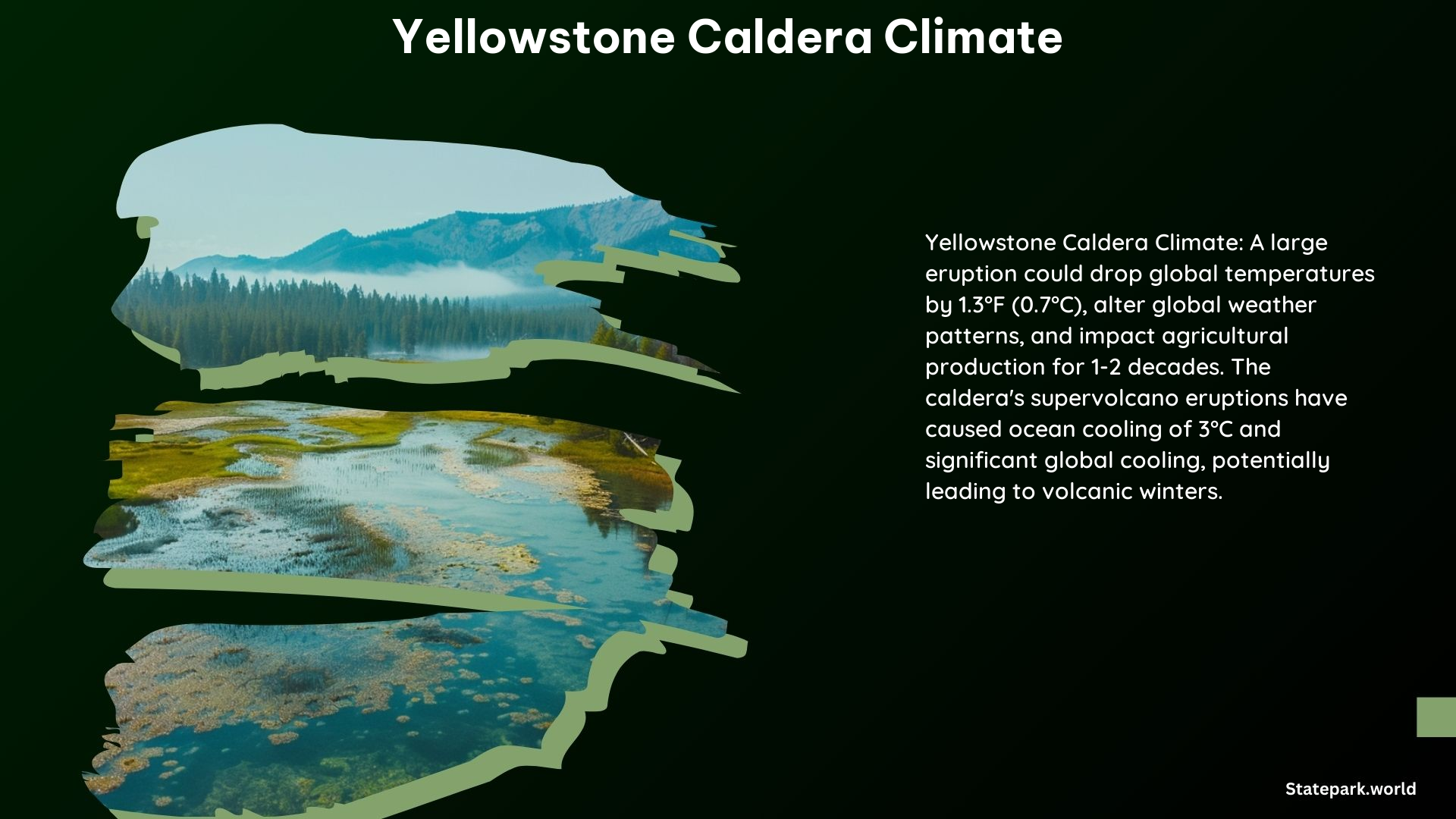The Yellowstone Caldera is a supervolcano located in the northwestern United States, and its potential eruption could have significant consequences for global climate patterns. This blog post will explore the climate change potential, global cooling effects, temperature drops, and the overall impact of the Yellowstone Caldera on Earth’s temperature.
Climate Change Potential of the Yellowstone Caldera
A large eruption of the Yellowstone Caldera could have a profound impact on global weather patterns and human activity, particularly in the areas of agricultural production. The volcanic climate impact of a Yellowstone super eruption would lead to large negative temperature anomalies at the surface and significant warming of the aerosol-containing layers, altering atmospheric and ocean circulation and composition.
Global Cooling Effects of Yellowstone Caldera Eruptions

Each Yellowstone supervolcano eruption has caused a cooling effect on the ocean, as evidenced by isotopic analysis of foraminifera shells. This temporary global cooling is a result of the volcanic aerosols that persist in the stratosphere for several years, scattering incoming radiation back to space and absorbing outgoing longwave radiation.
| Eruption Event | Global Temperature Drop |
|---|---|
| Yellowstone Supervolcano Eruption | 1.3°F (0.7°C) |
| Post-Eruption Ocean Cooling | 3°C |
Temperature Drops Caused by Yellowstone Caldera Eruptions
The eruptions of the Yellowstone Caldera would block sunlight with ash and gases, plunging the planet into volcanic winters. This can lead to significant temperature drops, with global temperatures dropping by as much as 1.3 degrees Fahrenheit (0.7 degrees Celsius) at the height of the impact.
Impact of Yellowstone Caldera Eruptions on Earth’s Temperature
The volcanic aerosols released during a Yellowstone Caldera eruption can persist in the stratosphere for several years, up to a decade. This can lead to a significant scattering of incoming radiation back to space and absorption of outgoing longwave radiation, resulting in large negative temperature anomalies at the surface.
Local Climate in Yellowstone National Park
The weather in Yellowstone National Park is characterized by significant temperature swings, with daytime temperatures ranging from 30°F to 80°F (-1°C to 27°C) and cool nights that can drop below freezing, especially at higher elevations. The long-term averages of daily weather in Yellowstone are also changing, with significant impacts on the local climate and ecosystems.
In conclusion, the Yellowstone Caldera has the potential to significantly impact global climate patterns, causing temporary global cooling and altering atmospheric and ocean circulation. The local climate in Yellowstone National Park is characterized by unpredictable temperature swings, and the long-term averages of daily weather are changing, affecting the local ecosystems.
References:
1. https://www.usgs.gov/volcanoes/yellowstone/science/climate-change-potential-a-result-a-large-eruption-yellowstone
2. https://ui.adsabs.harvard.edu/abs/2009EGUGA..11.4931T/abstract
3. https://www.nps.gov/yell/planyourvisit/weather.htm
4. https://www.forbes.com/sites/trevornace/2017/10/26/yellowstone-volcano-eruptions-caldera-global-climate/
5. https://www.usgs.gov/faqs/could-a-large-yellowstone-eruption-significantly-change-climate
